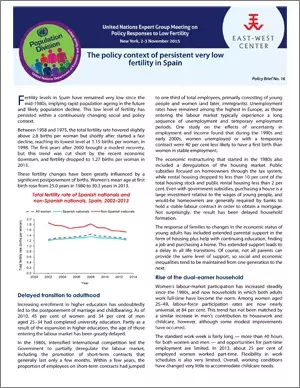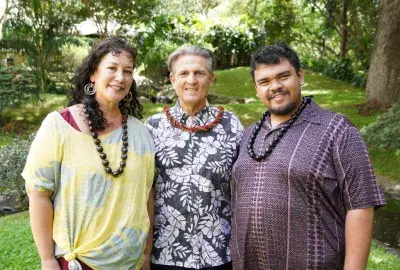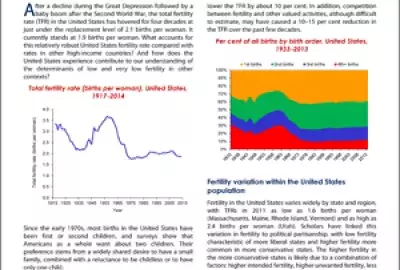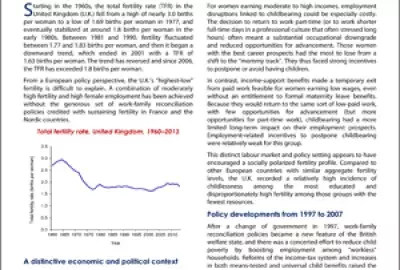Error message

Fertility levels in Spain have remained very low since the mid-1980s, implying rapid population ageing in the future and likely population decline. This low level of fertility has persisted within a continuously changing social and policy context. Between 1958 and 1975, the total fertility rate hovered slightly above 2.8 births per woman but shortly after started a fast decline, reaching its lowest level at 1.15 births per woman, in 1998. The first years after 2000 brought a modest recovery, but this trend was cut short by the recent economic downturn, and fertility dropped to 1.27 births per woman in 2013. These fertility changes have been greatly influenced by a significant postponement of births. Women’s mean age at first birth rose from 25.0 years in 1980 to 30.3 years in 2013.
|
Fertility levels in Spain have remained very low since the mid-1980s, implying rapid population ageing in the future and likely population decline. This low level of fertility has persisted within a continuously changing social and policy context. Between 1958 and 1975, the total fertility rate hovered slightly above 2.8 births per woman but shortly after started a fast decline, reaching its lowest level at 1.15 births per woman, in 1998. The first years after 2000 brought a modest recovery, but this trend was cut short by the recent economic downturn, and fertility dropped to 1.27 births per woman in 2013. These fertility changes have been greatly influenced by a significant postponement of births. Women’s mean age at first birth rose from 25.0 years in 1980 to 30.3 years in 2013.
|
Policy Briefs - United Nations Expert Group Meeting on Policy Responses to Low Fertility







